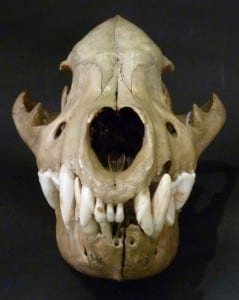Underwhelming Fossil Fish of the Month: January 2016
By Mark Carnall, on 29 January 2016
January 2016 was a big month for palaeontology in the media. This month you may have caught a programme on fossil Mesozoic vertebrate finds featuring one of the most beloved natural historians, some might go as far to say, ‘National Treasure’. No, I’m not talking about David Attenborough and some big dinosaur, that’s the easy route to media coverage. I’m talking about our very own underwhelming fossil fish on Radio 4’s Inside Science programme. If you’re new to this blog series, the humble goal is to increase global fossil fishteracy one underwhelming fossil fish from the Grant Museum collections at a time.
You might expect that with the boost in coverage, we’d have some timely underwhelming fossil fish merchandise to shill, a calendar perhaps or a pack of underwhelming fossil fish Top Trumps cards. However, as I’ve told numerous producers this week who tried to secure the underwhelming fossil fish of the month film rights, this is not the UFFotM way. We’re going to be ploughing on ahead with yet another uninteresting fossil fish, not one that’s any more or less underwhelming, just another un-noteworthy, comme ci, comme ça fossil. No fuss and especially no muss. (more…)
 Close
Close




